How AI Has Transformed the 2024 Holiday Marketing Landscape: Three Key Strategies
Local Memo: The Great Disappearing Local Finder

Local Memo: The Great Disappearing Local Finder
In this week’s update, learn about the great disappearing local finder; who can use Google’s small business attribute; expandable panels in local profiles; how local SERPs are looking in Europe; Gemini’s impact on SEO; and Instagram’s new Friend Map.The Great Disappearing Local Finder
Starting sometime on Monday, users in widespread locations across the globe began noticing that the link to “More places” (sometimes “More businesses”) had disappeared from local packs, meaning the link to the local finder, where the full local result set is shown, was simply gone. This was true on both desktop and mobile. Unsurprisingly, the local SEO community reacted strongly to the news, making the point that with only three results available, many businesses would lose out entirely in near me searches for generic keywords. Turns out the disappearance of the local finder link was just a bug, though; searches began showing the “More places” button again as of Tuesday morning. Though this was apparently not an intentional move on Google’s part, it reminds us of the importance of the local pack, with one user on X claiming that only 1% of users click through to the local finder. Research from Near Media shows that clickthrough percentages are higher, however, and that they differ by vertical; for medical searches, for example, 23% of clicks go to the local finder.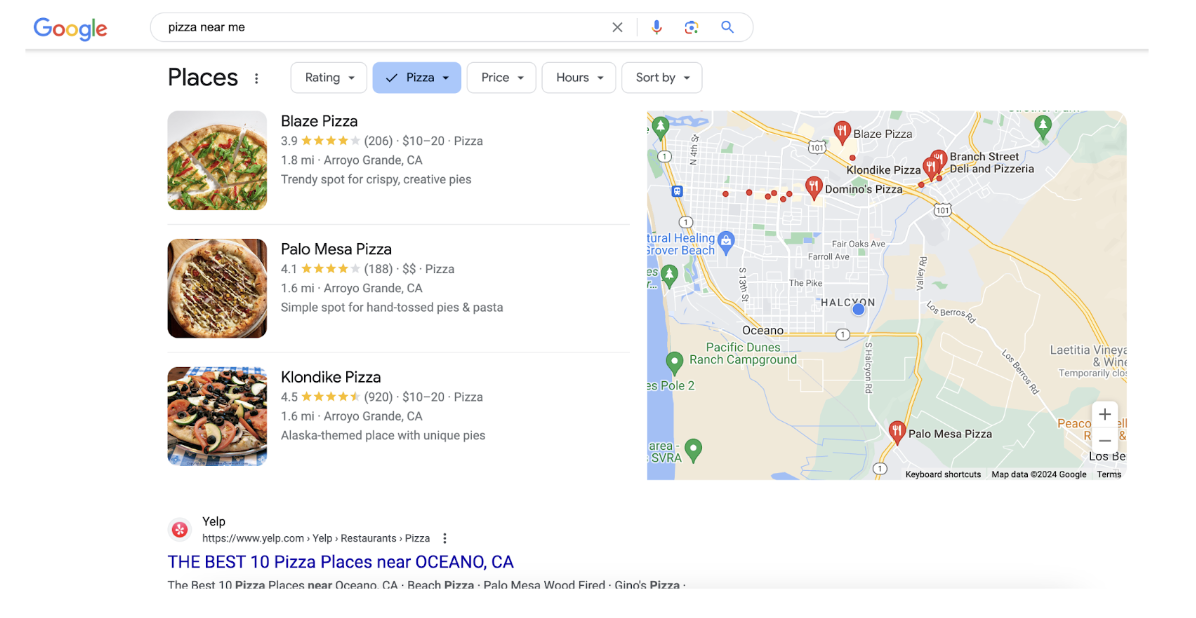
My “pizza near me” search on Monday, February 26 with no “More places” button
Clarity on Using Small Business Attribute
The small business attribute was recently introduced by Google as a feature businesses can enable in order to showcase, with a special icon, that they are a small business. As we’ve discussed in this space, the attribute can also act as a filter, so that only businesses with the attribute enabled will appear when searchers specify that they want a small business. Google is now providing clarification on who can use the attribute, in the form of messages to businesses who try to enable it and are rejected. In the message, Google says, “To be considered a small business, your business must meet our current criteria,” citing two requirements: the business cannot be part of a franchise or chain, and the business must have annual revenue of less than $10 million. This is useful to know, since at first it was not clear if, for instance, independent franchise owners could use the attribute. It’s also worth highlighting that Google references their “current criteria,” implying that criteria might evolve over time.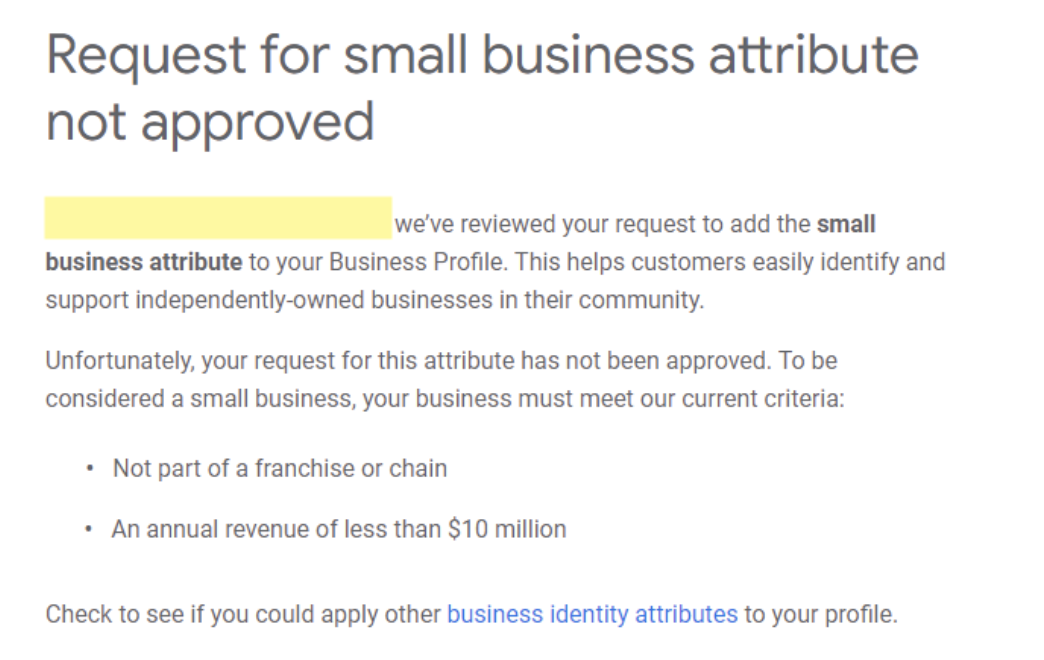
Example of Google’s messaging when the small business attribute is not approved
Google Tests Expandable Panels in Local Profiles
Google appears to be testing expandable content panels in local profiles, according to reporting from Barry Schwartz. The new content panels have headings like “Locations,” “Reviews,” “Low cost,” “Popular times,” “Questions & answers,” “Updates,” “Contact,” and “Related categories nearby.” They first appeared in mobile profiles but are now also showing up on desktop. Some headings seem to refer to standard features in profiles, like popular times, whereas others seem dynamically generated, based perhaps on content Google finds about the business, or influenced by search intent.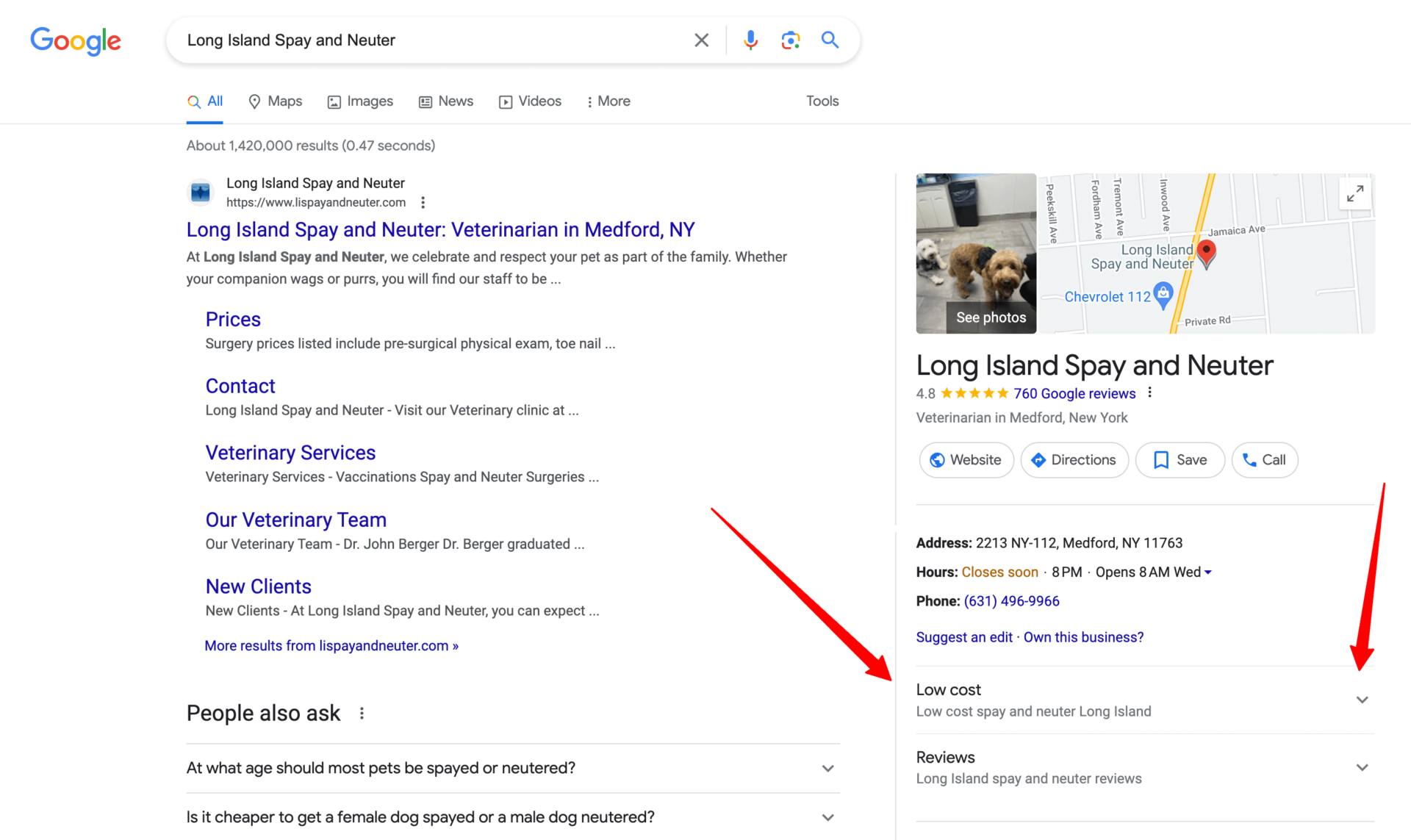
Courtesy Amy Toman / Search Engine Roundtable
Local SERPs Are Looking a Lot Different in Europe
Near Media has published an analysis of local search results in Europe, which are now quite different from those in the U.S. due to the E.U.’s Digital Markets Act (DMA). The DMA requires that top tech companies like Google give room to competitive content in search results – not local results only, but also including categories like travel, shopping, and employment. Today in the E.U., local search results give much more prominence than before to third-party sites. For instance, an example restaurant search in Dublin includes a carousel of results from TripAdvisor, OpenTable, Yelp, and Uber Eats. Another area of the page highlights several results from one provider, OpenTable, in a similar carousel view. Reviews are also aggregated from multiple sites, rather than just Google alone. The page looks a lot busier overall but does provide space for content sources besides Google.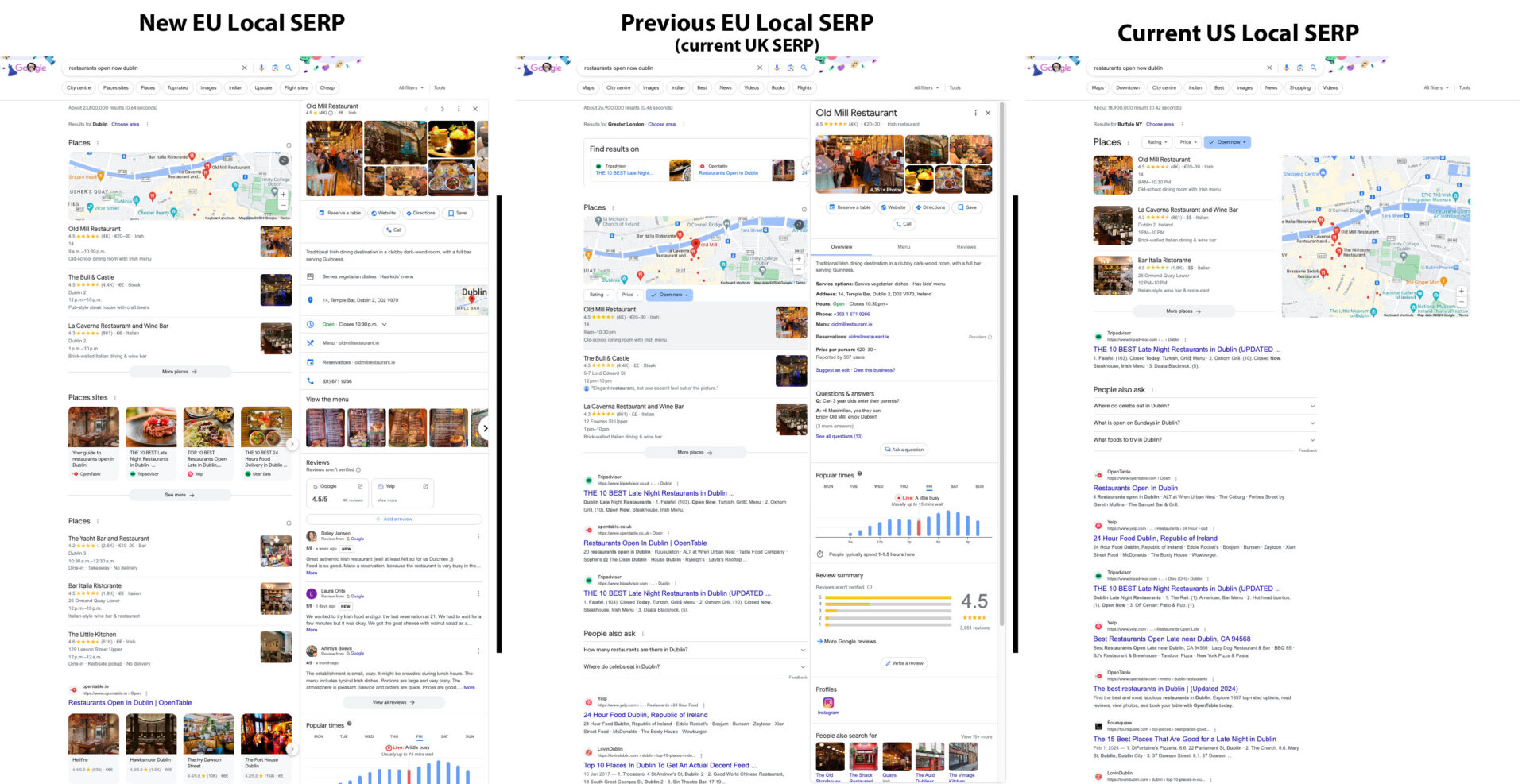
Two versions of local results in the E.U. compared to the U.S., courtesy Near Media
Google Suspends Images in Gemini; Gemini’s Impact on SEO
Google has temporarily disabled the image generation feature of its Gemini AI tool, amidst controversy about its tendency to produce historically inaccurate images such as German soldiers from World War II with dark skin. According to the company, these images were produced as part of an effort to promote diversity in image generation that did not properly account for historical context. In other Gemini news, Aleh Barysevich argues that Gemini’s ability to understand text, voice, images, and videos may usher in an era of expanded multimodality in search, if and when Google adds Gemini capabilities to its search interface. Gemini, which is already powering SGE, could also make search much more personalized, complicating the notion of ranking for predictable factors, and could heighten the importance of entities over keywords.Instagram Tests “Friend Map”
Meta recently confirmed that Instagram is experimenting with a “Friend Map” that functions similarly to Snapchat’s Snap Map, showing the location of friends geographically. Posts and Stories tagged with location will appear on the Friend Map for others to discover. Users will be able to decide who sees their location and which content is displayed, and can leave notes to remember details of places they’ve visited. Andrew Hutchinson speculates that, like Snap Map, Instagram’s map might eventually include business listings and expanded opportunities for local businesses to reach out to Instagram users.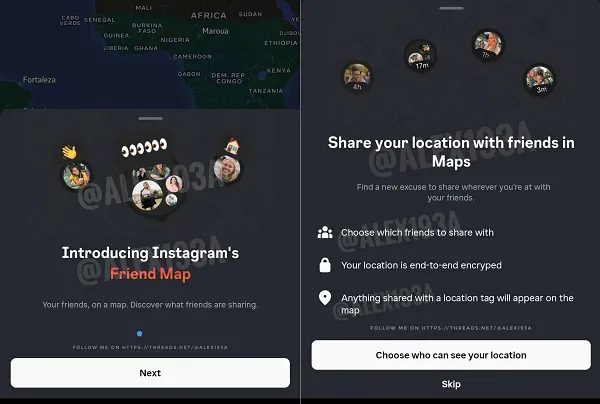
Courtesy Alessandro Paluzzi / Social Media Today
Subscribe to Local Memo!
Signup to receive Local memo updates and the latest on localized marketing, delivered weekly to your inbox.




